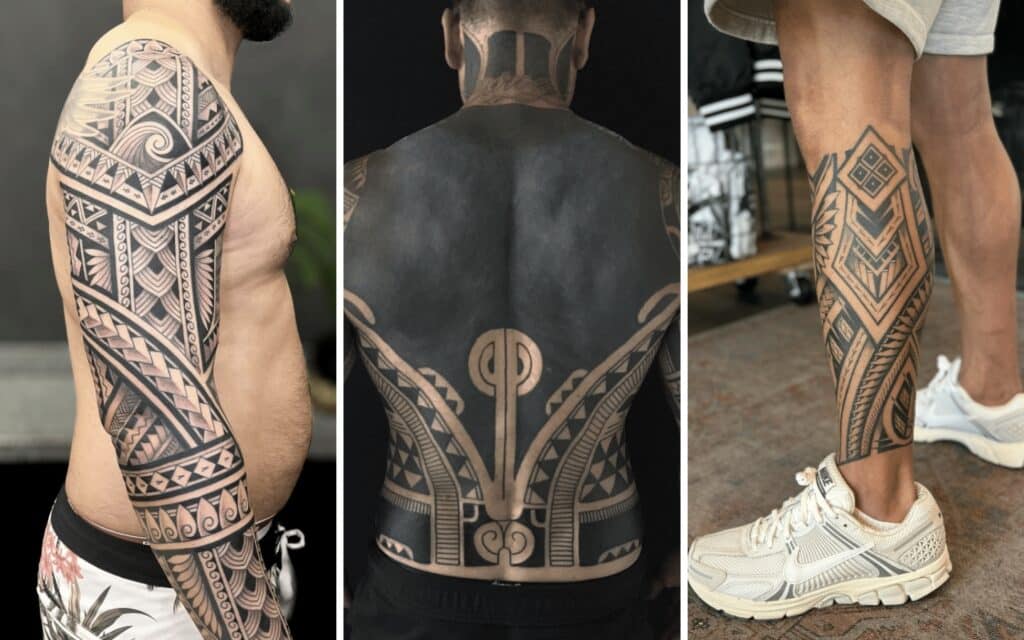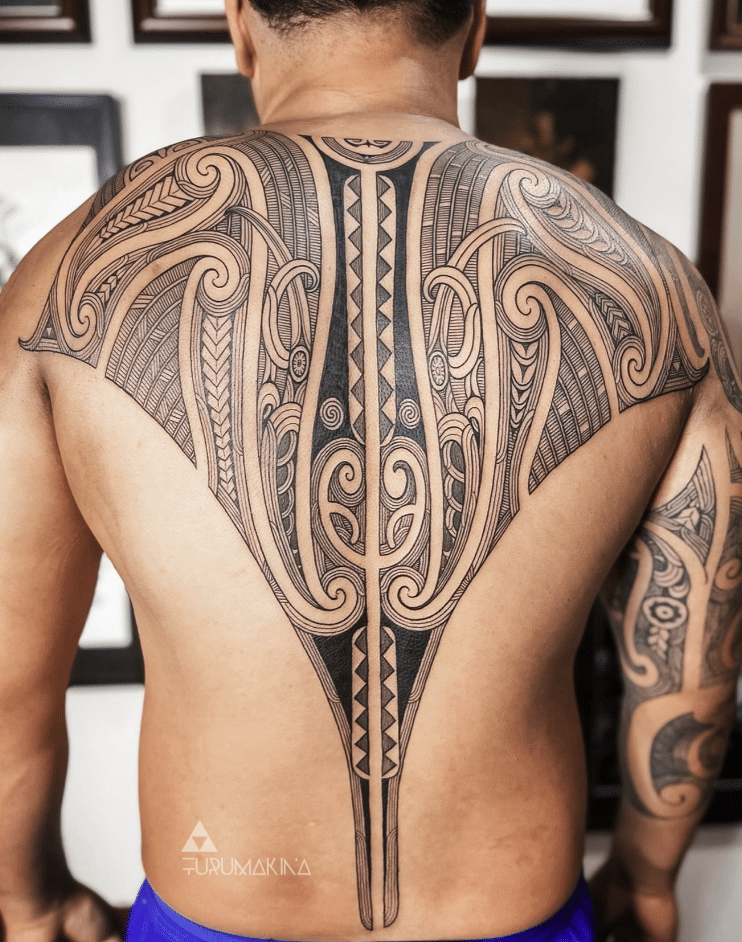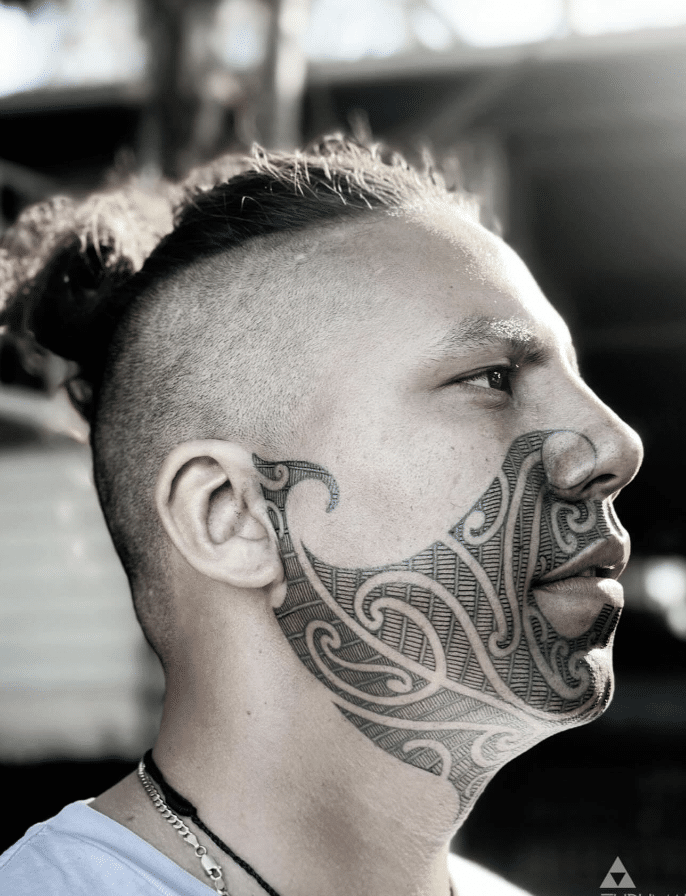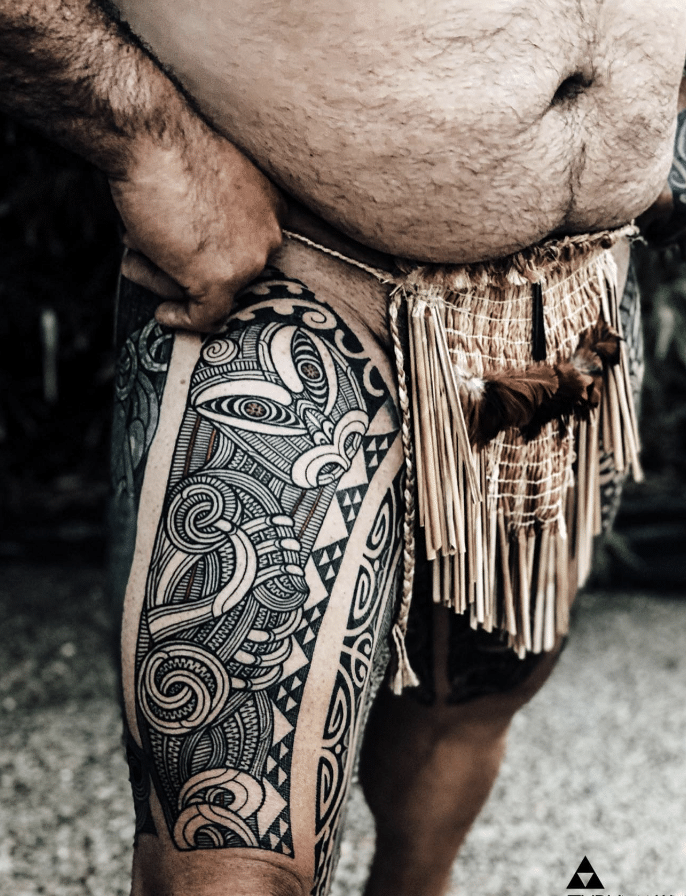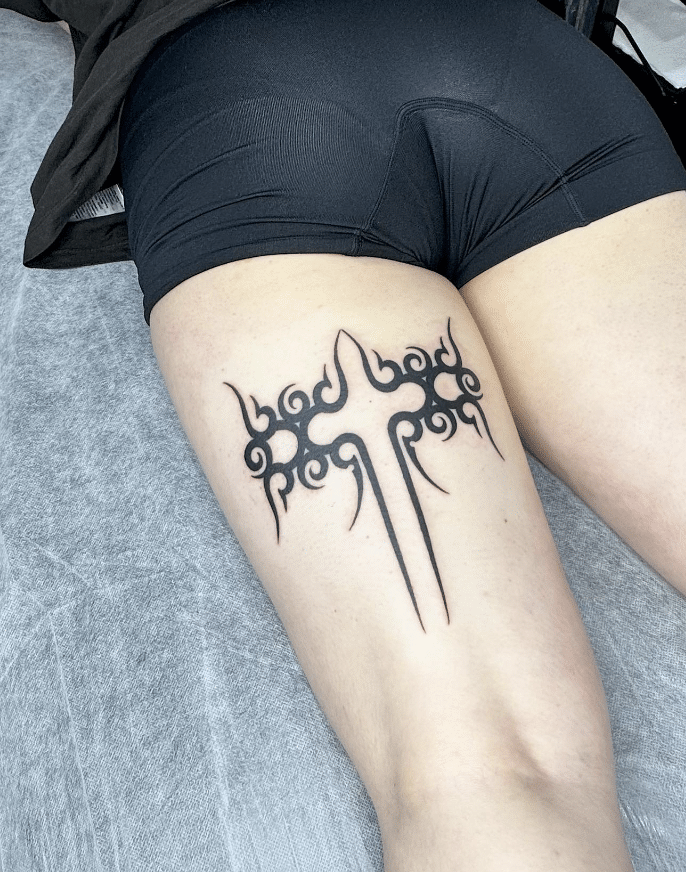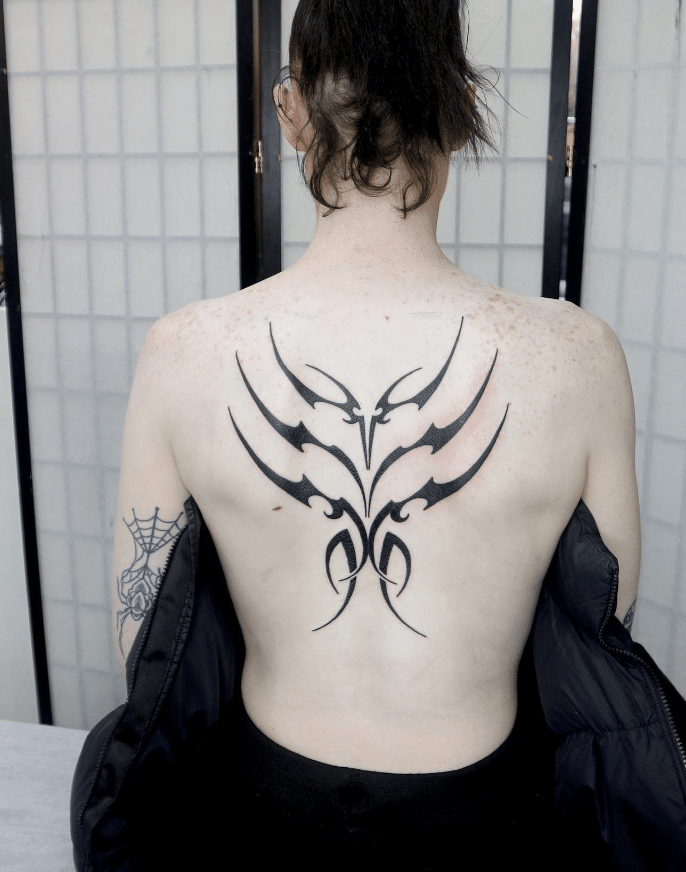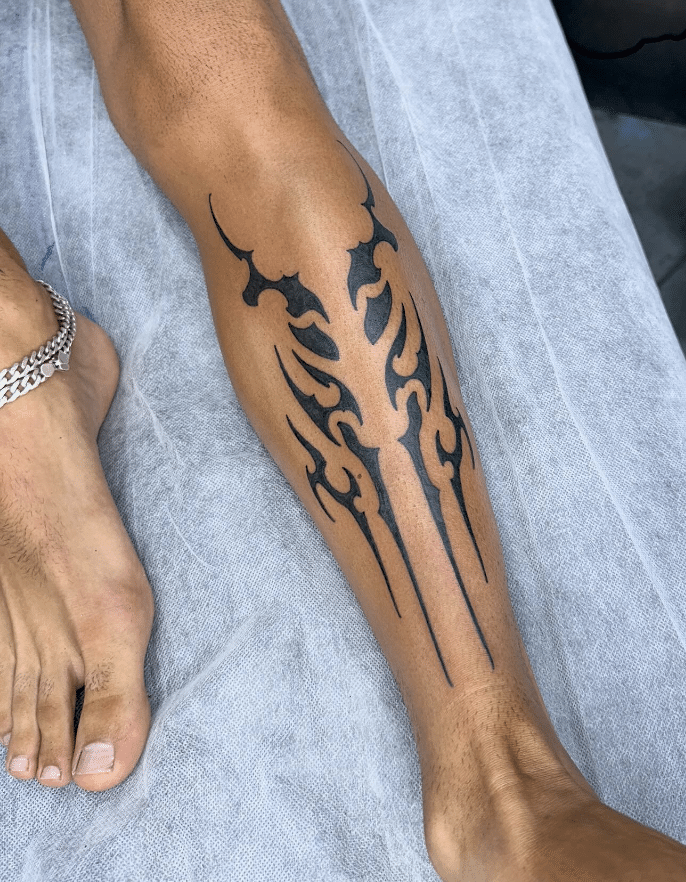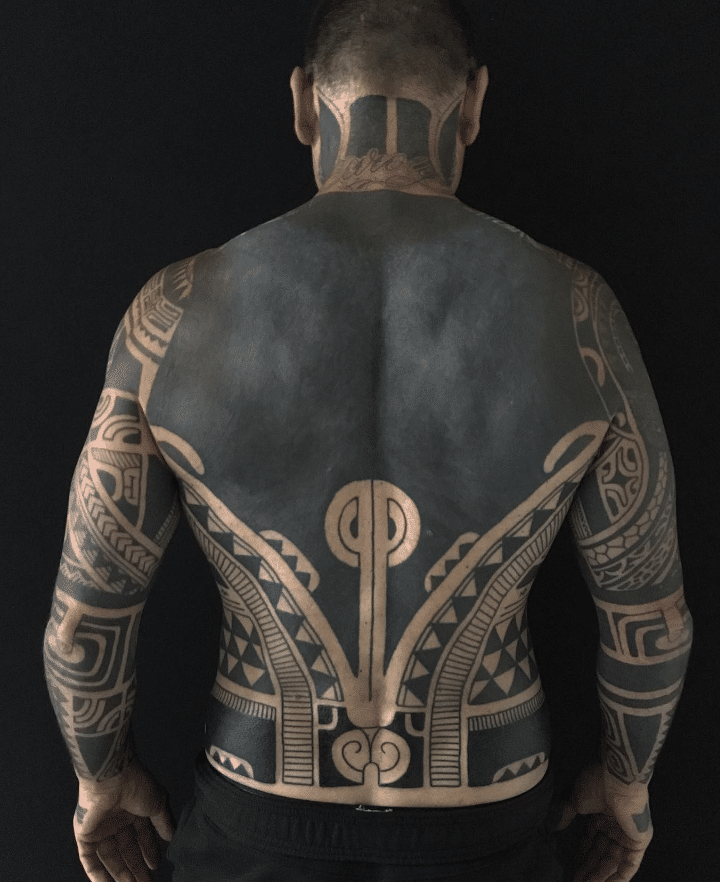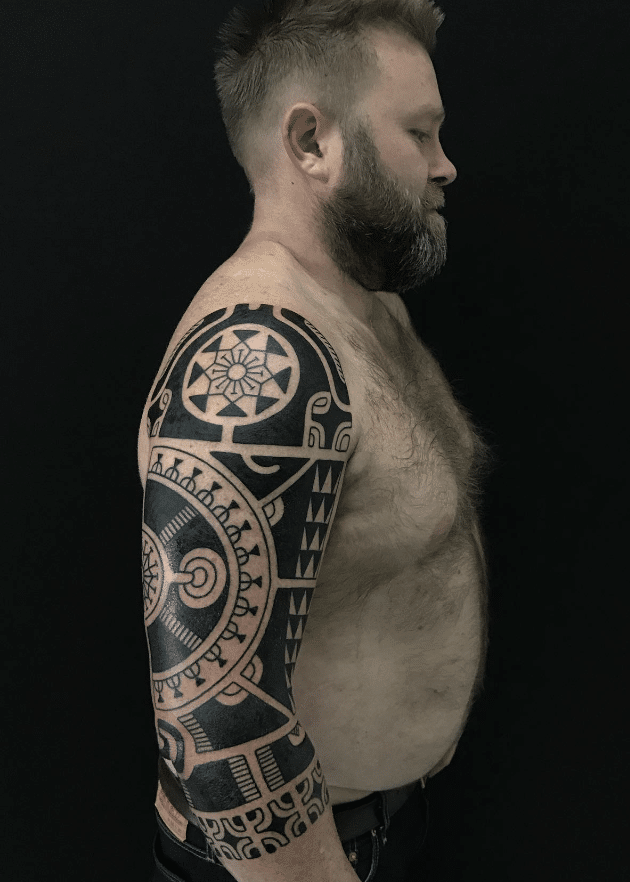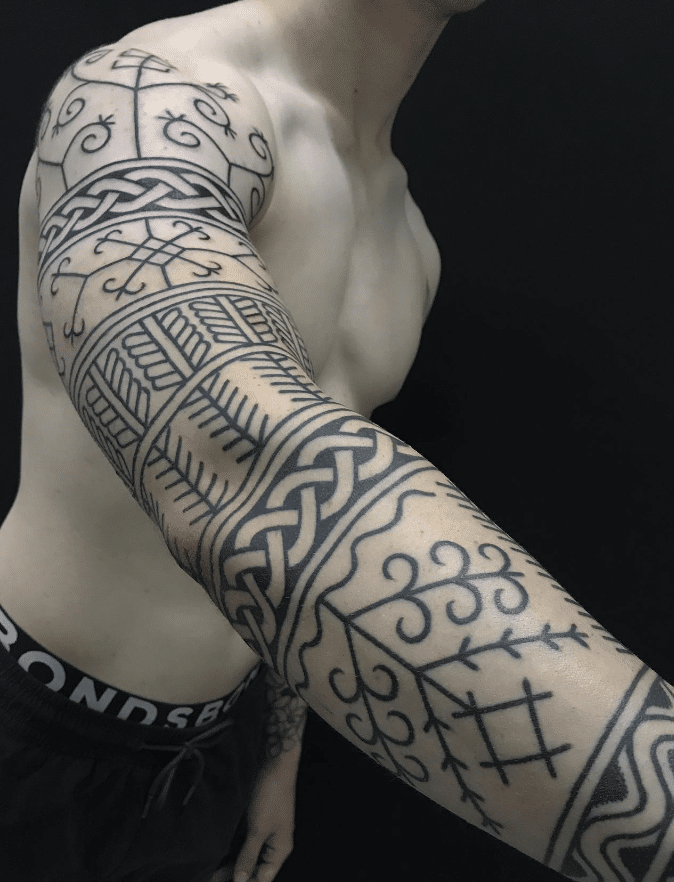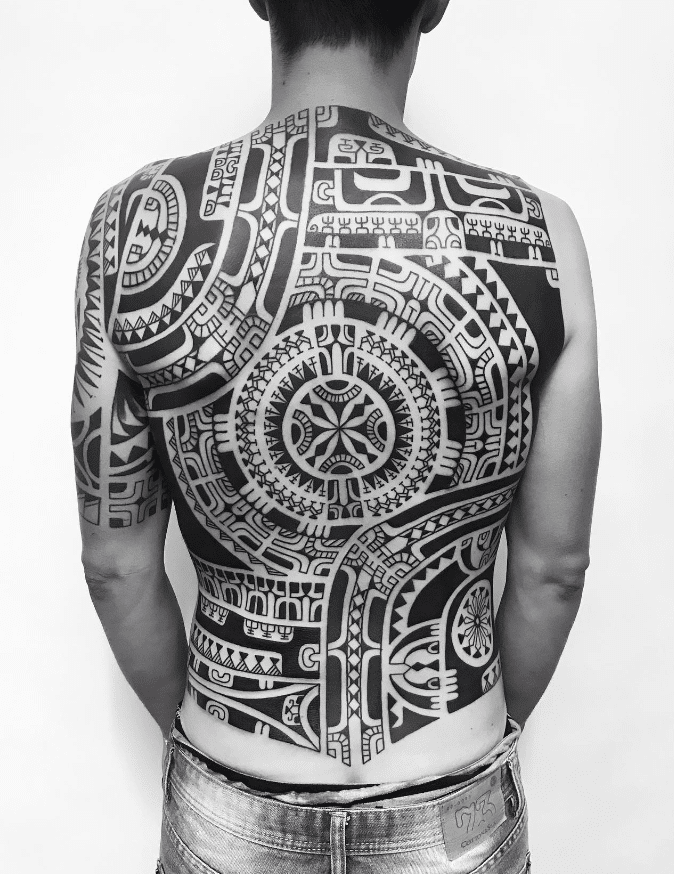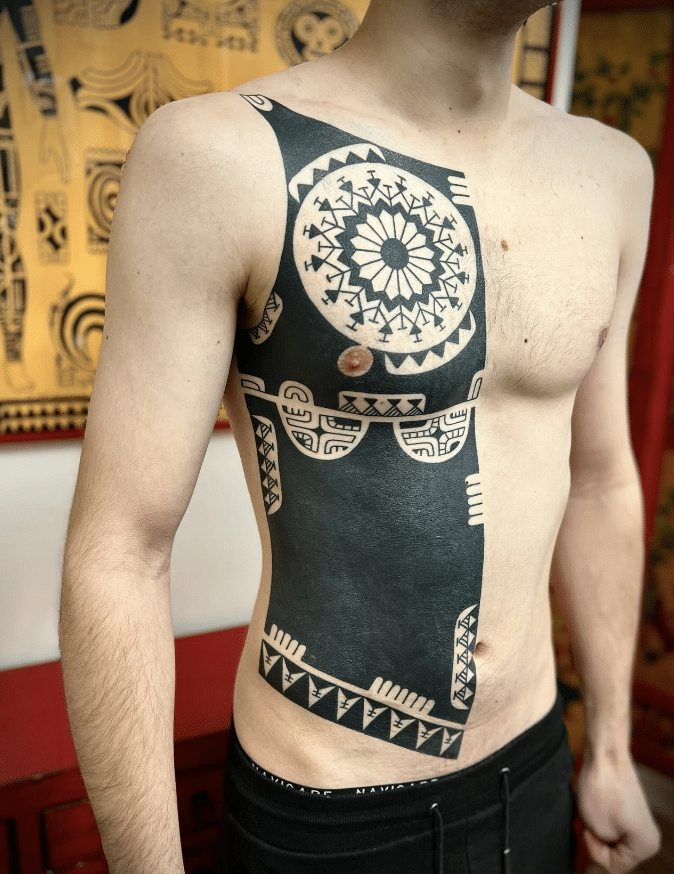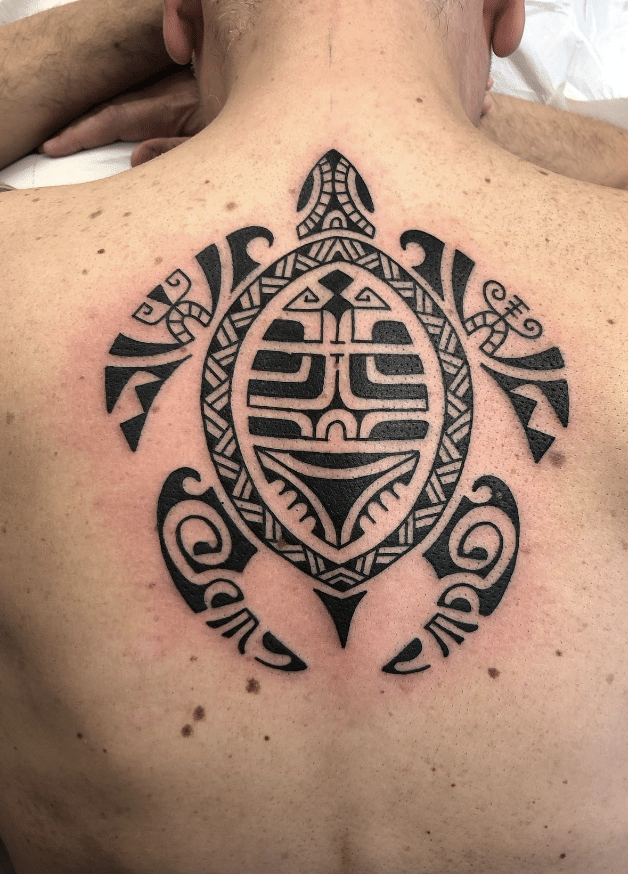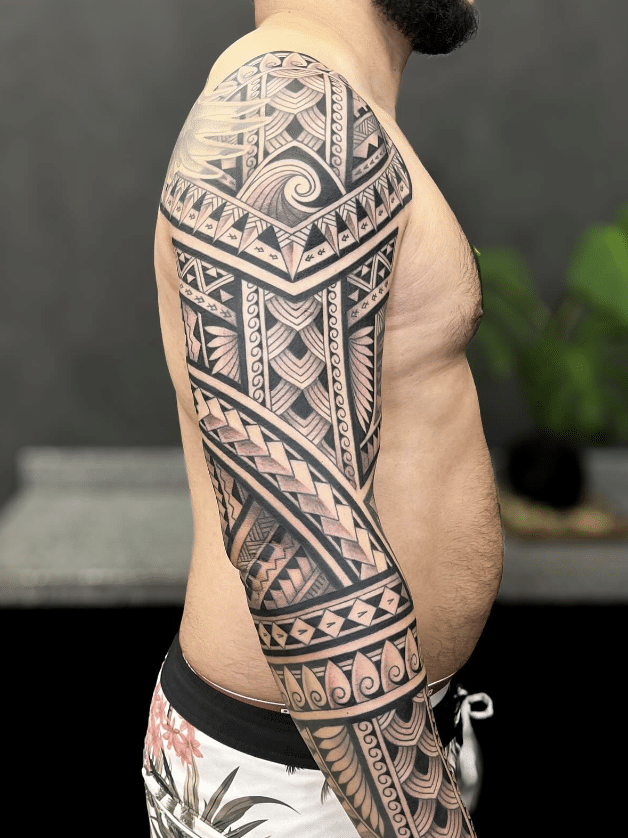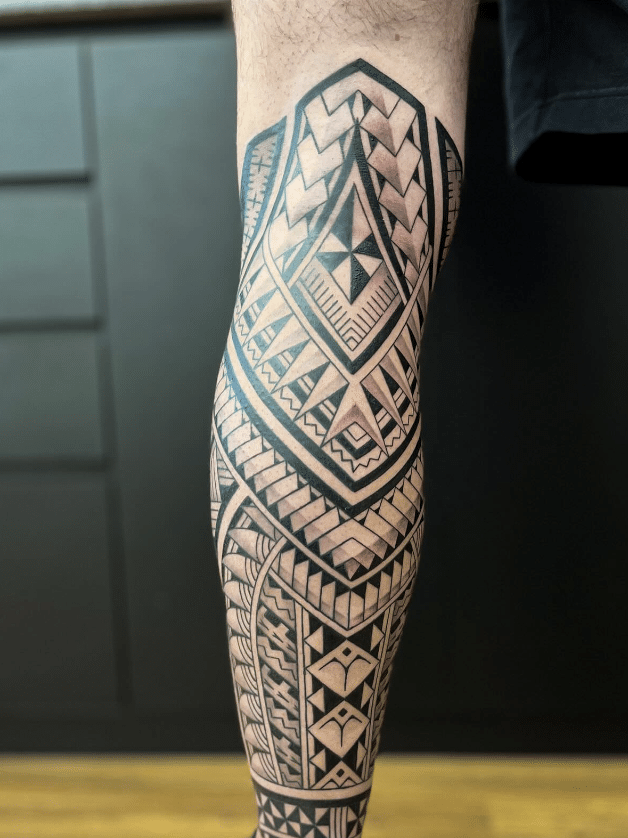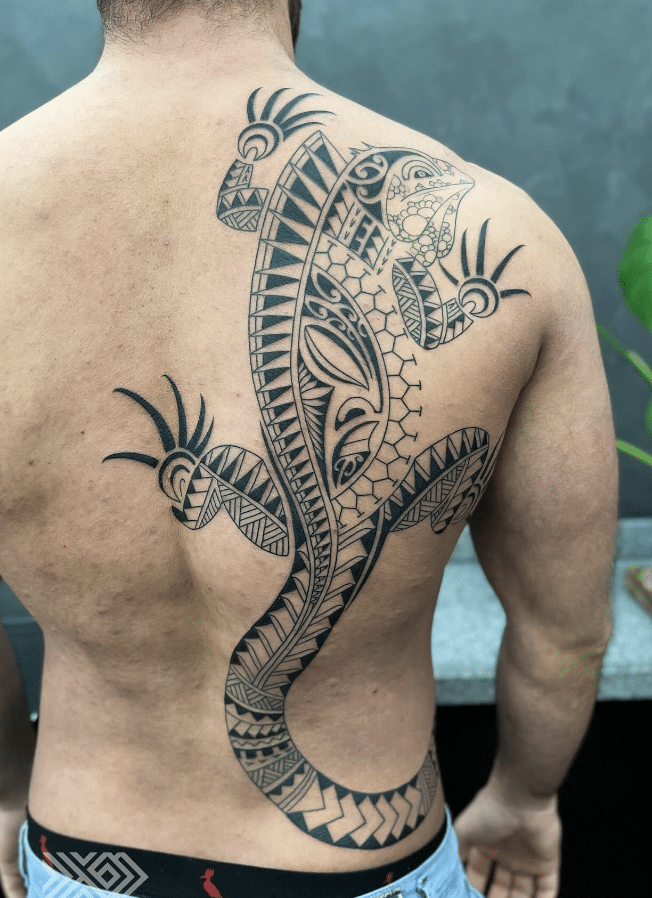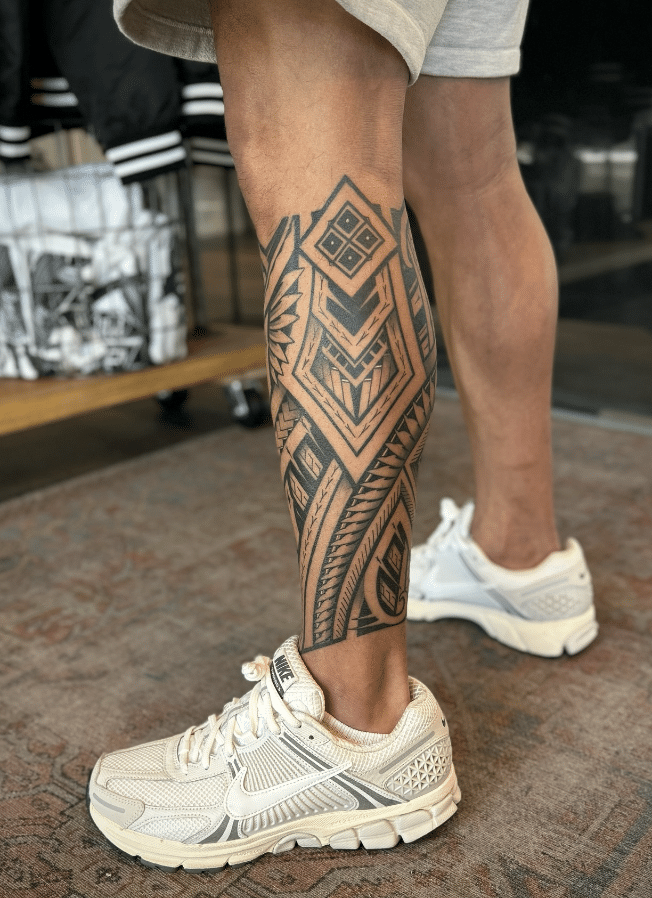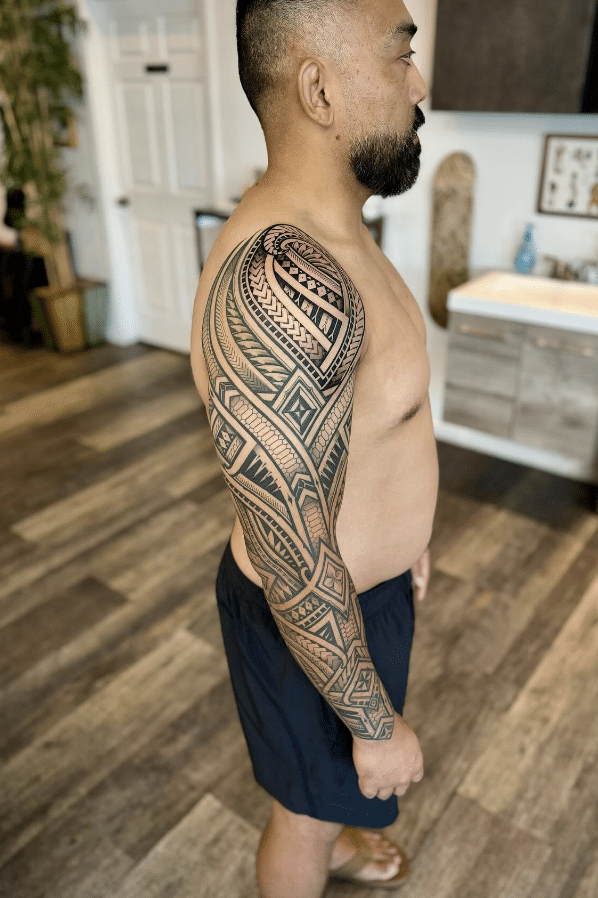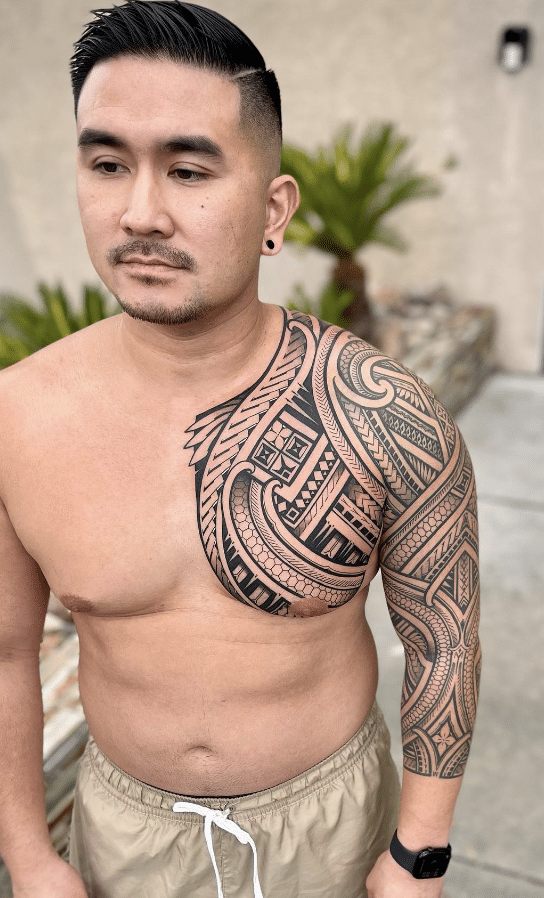The Tribal Tattoo is one of the oldest Tattooing art forms dating back more the 5000 years.
While its origins are impossible to trace, there is enough evidence to prove tattooing was an art form practiced in ancient Egypt, Polynesia, Africa, and Southeast Asia.
These cultures used tattoos to convey status, lineage, and religious beliefs.
History of Tattoos
Tattoos were originally believed to have been started by the Ancient Egyptians, with the earliest evidence of tattoos coming from mummies thought to have died between 3351 and 3017 B.C. in ancient Egypt.
While these mummies were discovered in 1990, it wasn’t until 2018 that upon re-examing the bodies with infrared imaging that the mummies had in fact tattoos on their bodies that were originally thought to be smudges on the skin.
These Tattoos are the earliest known depictions of images on the human body with the male having the image of a wild bull and a sheep on his arm, and the female possibly having a staff and something like the letter S on her arm and shoulder.
However, these are still not the oldest known Tattoos found on a preserved human body.
Europe's most famous mummy, Ötzi the Iceman’s body was found 5000 years after his murder in the Ötztal Alps bordering Austria and Italy.
Ötzi the Iceman became a global sensation with books written about him and documentaries and a film reconstructing his life in Neolithic Europe before his death.

Photo credit: Scientific American
Ötzi had a staggering 61 tattoos adorned across his body which were believed to be applied by piercing the skin and applying charcoal dust.
While the reason for Ötzi’s tattoos are uncertain, he did have himself inked in places where his body was starting to wane, such as his knees and ankles.
These locations lead archeologists to theorize that the reason for Ötzi’s tattoos were for pain relief, but others theorize that they were for ritual, ceremonial, or even religious reasons.
Meaning of Tribal Tattoos
Tribal Tattoos have a variety of different meanings based on what culture they come from, and the significance of the tattoo received.
These mark an individual's belonging to a particular tribe or social group and are also seen as a rite of passage and a way to connect with one’s ancestors.
For instance, Maori tattoos, or moko, signify family lineage and social status within the tribe.
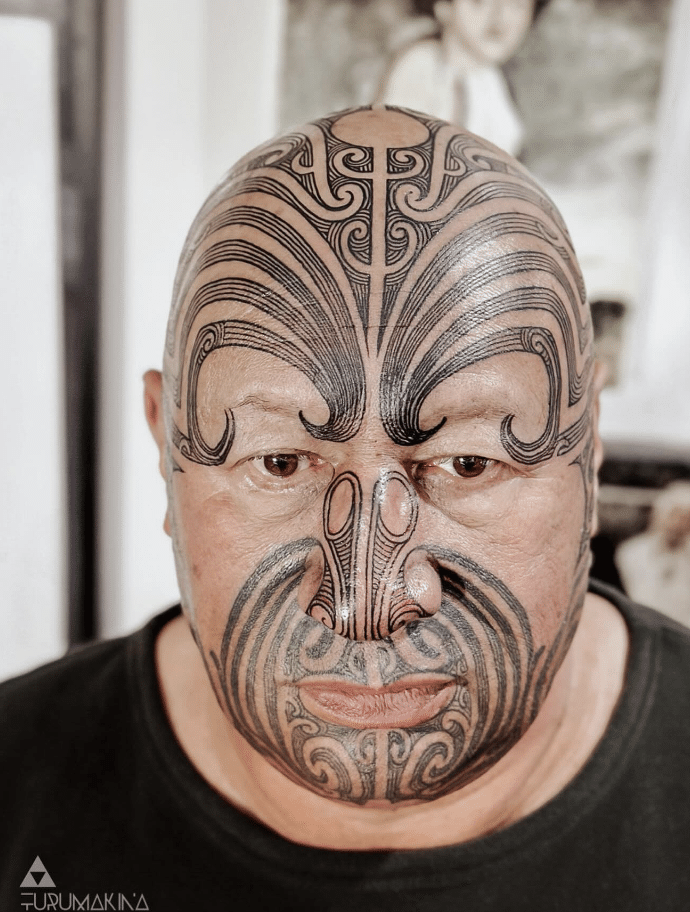
Photo credit: @tu_moko
Many tribes believe tattoos have mystical or protective powers.
For example, Bornean tribes traditionally believed that tattoos could ward off harm and bring health and good fortune, while in other cultures, tattoos are seen as a way to gain spiritual guidance or help.
They are often associated with rites of passage, helping guide the wearer through significant life transitions.
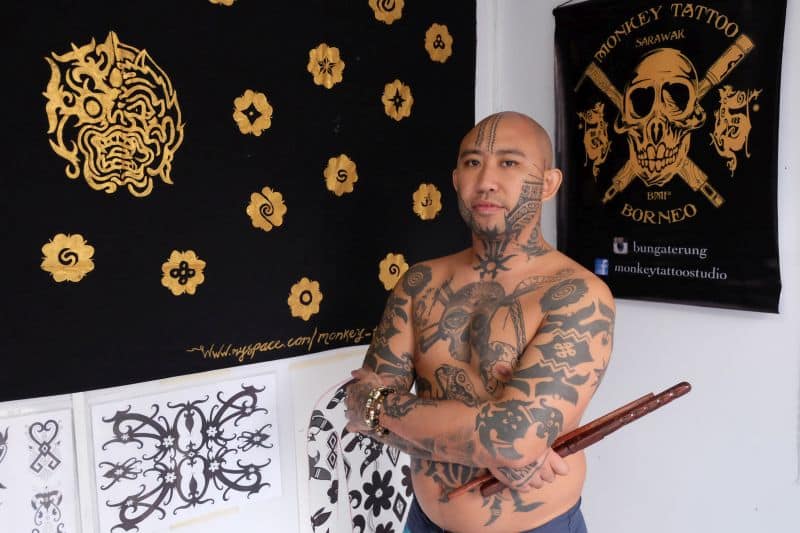
Photo credit: Malay Mail
Symbolism In Tribal Tattoos
Tribal Tattoos are rich in symbolism with frequently appearing elements that carry specific meanings.
As there was no writing in Polynesian culture, the Polynesian people used tattoos to express their identity and personality.
These tattoos indicated status in a hierarchical society, sexual maturity, genealogy, and their rank within the society.
In fact, it is also thanks to the Polynesian people that the word Tattoo exists today as when James Cook first returned from his first voyage, the word “tattoo” appeared in Europe.
Cook narrated the behaviors of the Polynesian people in his voyage, which he called tattaw.
Polynesian Tattoos have many different motifs with many different meanings. The turtle, for example, can symbolize health, fertility, longevity in life, foundation, peace, and rest.
The Lizard can represent good luck, but also death and bad omens, as in Polynesian culture, Gods and spirits would visit their ancestors in the shape of lizards.
Stingray Tattoos can symbolize themes of adaptation, gracefulness, and peacefulness.
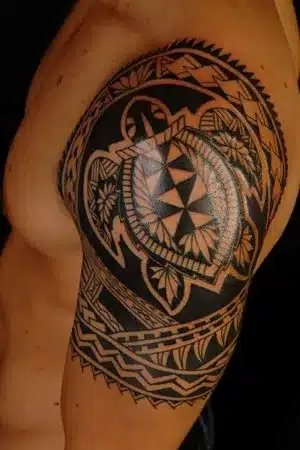
Photo credit: worldlytattoos
In Maori culture, the Pakati represents warriors/battles/courage and strength. The Hikuaua represents prosperity, while the Unaunahi represent abundance and health.
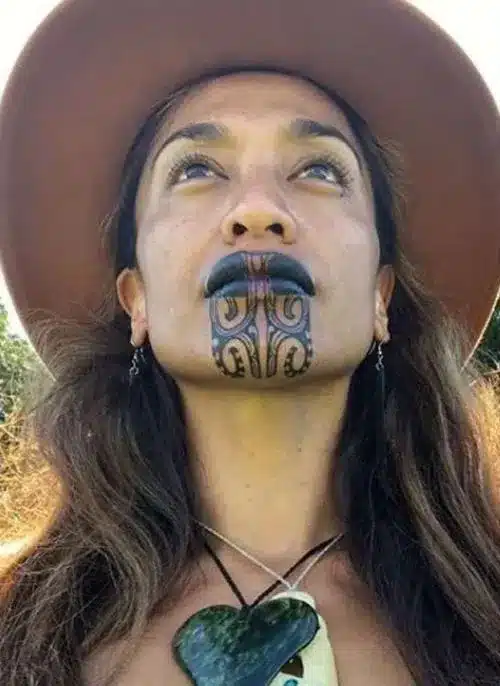
Photo credit: titantattoos.com
In Bornean and other African Tribal Tattoos, lines and stripes can signify strength, courage, and persistence.
And commonly found in Native American tribal tattoos, eagles symbolize strength, wisdom, and freedom.
Techniques Used For Tribal Tattoos
Hand Tapping
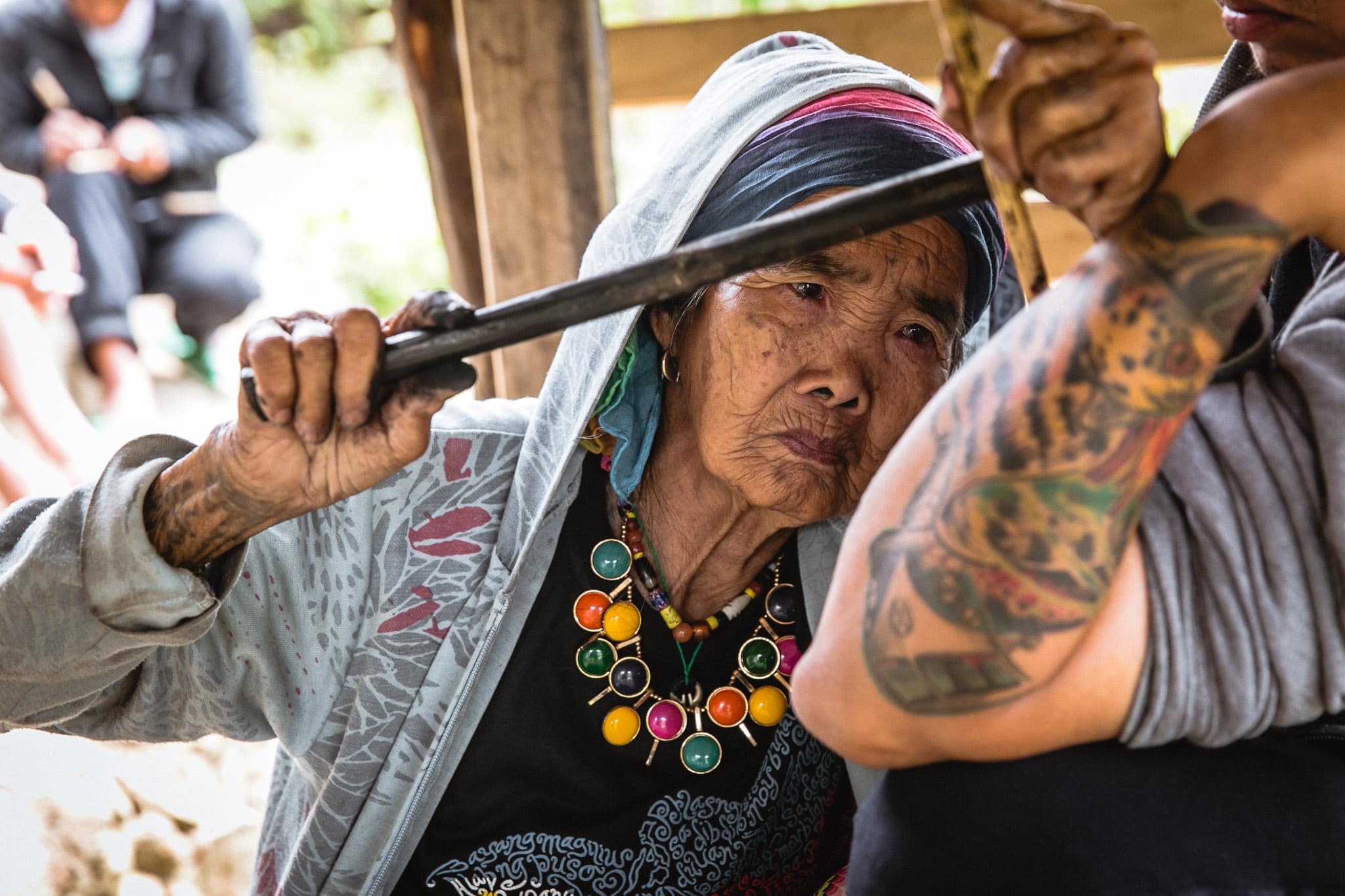
Photo credit: imkiran.com
Hand-tapping is one of the most ancient tattooing techniques, practiced in many cultures, including those in Polynesia, the Philippines, and Indonesia.
This method involves a set of tools to hand-tap the ink into the skin using hand-tapping needles made from bone, tusk, wood, or metal.
The needle tool is first dipped into the ink, and then the tattoo artist carefully places the ink-laden needles against the skin where the tattoo will be placed.
Using the tapping stick, the tattoo master gently but firmly taps the handle of the needle tool.
Each tap drives the needles slightly into the skin, depositing the ink. The process is rhythmic and may be synchronized with music or chants.
The artist moves the tool along the skin, repeating the tapping motion to continue the pattern.
This requires great precision and skill to ensure the design is consistent and evenly inked.
This style of Tribal Tattoo artistry became increasingly popular due to Apo Whang-Od the last "mambabatok" from a remote village of Buscalan featured in a Discovery Channel series documentary called Tattoo Hunter.
Apo Whang-Od would go on to become the oldest person ever to be featured on the cover of Vogue magazine.
Skin Cutting
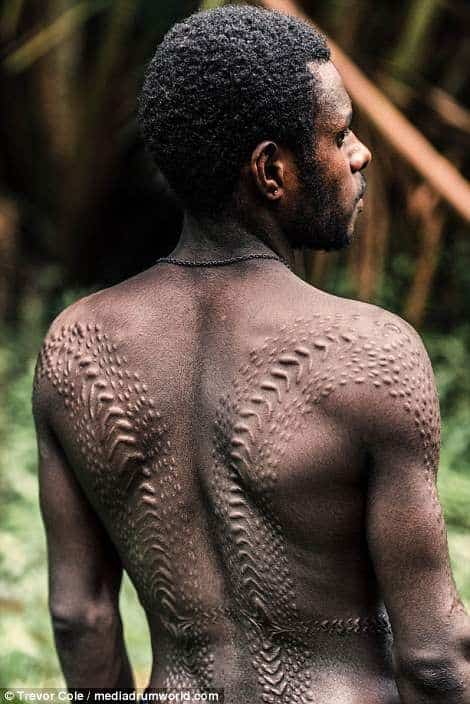
Photo credit: Pinterest
Skin cutting is a tattooing artform practiced by tribes in Africa and some Arctic cultures.
This technique involves cutting the skin with a sharp tool and then rubbing ink or ash into the wound.
Once healed, the design appears in the skin as a raised scar, giving another layer of texture.
Bone And Thorn Needles
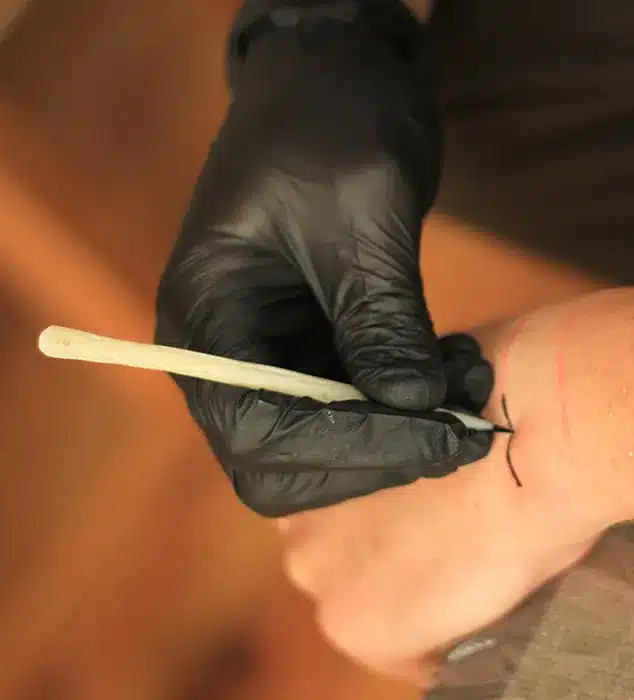
Photo credit: tennesseearchaeologycouncil.wordpress.com
The bone needle technique was used by Native American tribes and ancient Egyptians.
This technique involved fashioning needles out of animal bones. The needles are then used to puncture the skin, and ink made from natural materials like plant extracts or soot is applied into the punctures.
Similar to bone needles, thorn needles are used in parts of Africa and the Amazon.
Thorns from specific plants are attached to a stick and dipped into ink. The thorn is then used to pierce the skin, depositing the ink.
Chiseling
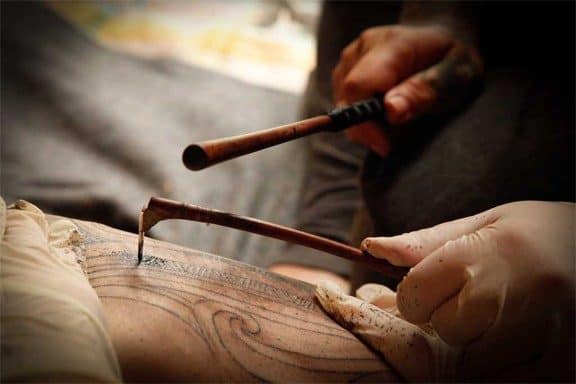
Photo credit: ArtHouse Tattoo
In the traditional Maori technique of "Ta Moko," chisels made from albatross bones are used for their tattooing process.
The chisel, or "uhi," is dipped into ink and then tapped into the skin with a mallet.
This method doesn’t just tattoo but also carves the skin, leaving grooves that form part of the design.
According to Maori mythology, the tattooing instrument used by the gods was brought to Earth by a demigod named Mataora.
This mythical figure is said to have introduced the art of tattooing to the Maori people.
Ink Rubbing
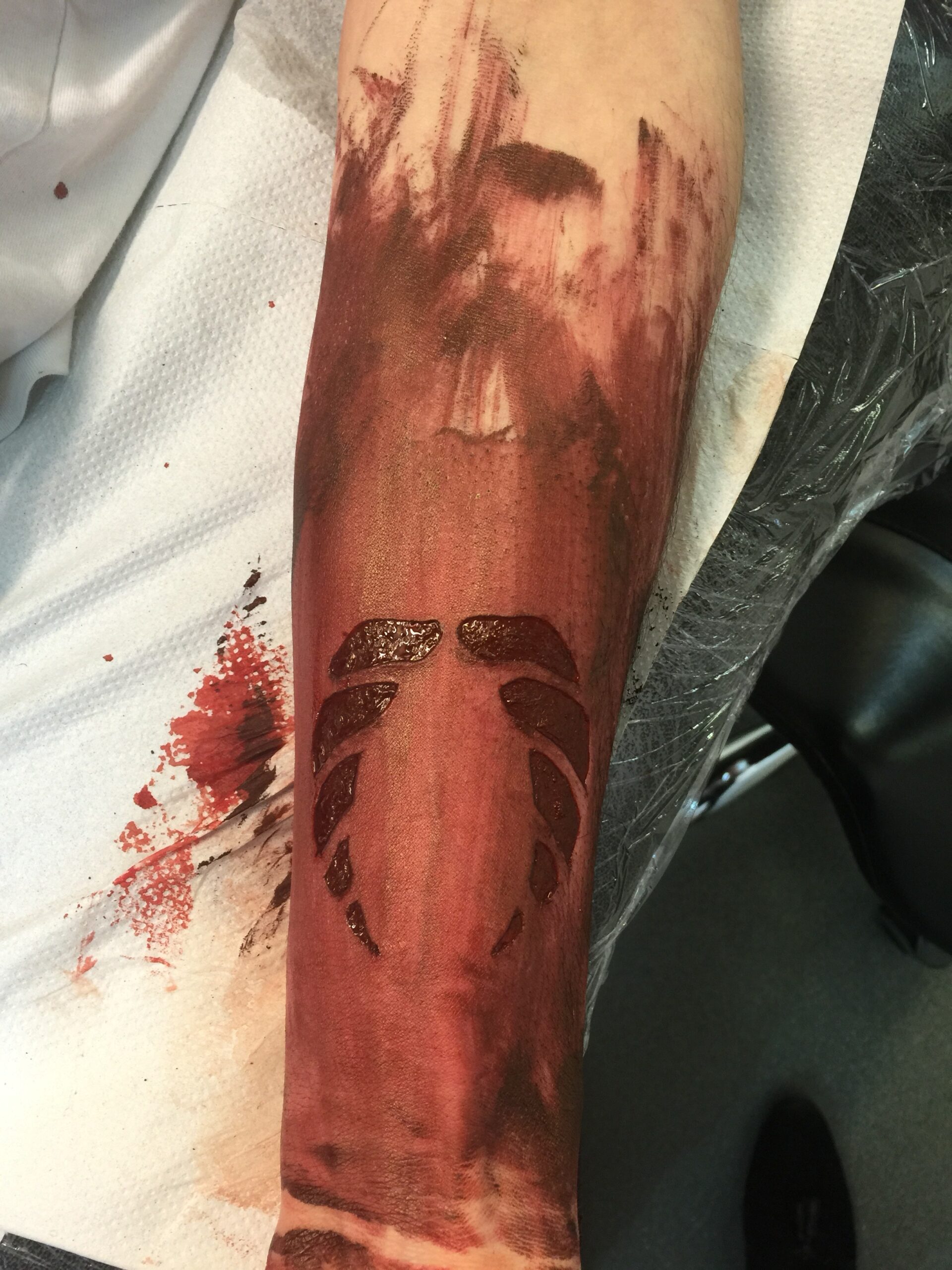
Photo credit: Kalima Emporium
In some cultures, after incisions are made, ink or a similar substance is rubbed into the fresh wounds.
This technique is often used in conjunction with methods like skin cutting or pricking, helping to ensure that the ink stays in place as the tattoo heals.
Modern Tribal Tattoos
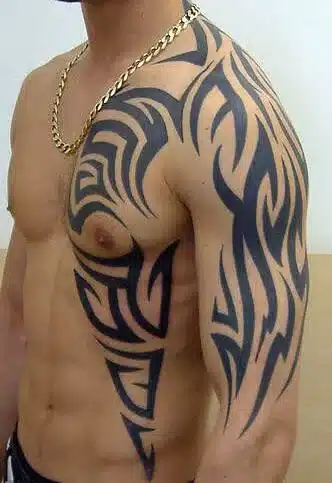
Photo credit: Reddit
Modern tribal tattoos became extremely popular in the late 20th century.
While taking inspiration from their tribal routes, modern tribal tattoos are typically chosen for their aesthetic and personal reasons.
Modern tribal tattoos are characterized by their bold black lines and geometric patterns.
They often incorporate sharp edges, pointed shapes, and swirling lines, with the artwork being typically large and expansive, designed to flow with the contours of the body.
Artists may blend elements from different cultures or add modern twists to traditional patterns. This approach allows for a wide range of creativity and personalization.
Unlike the bone and needle tattooing methods of indigenous tribes, modern tattoo artists have the advantage of using contemporary tattoo machines, which allow for precise and intricate designs that can be more detailed than traditional methods.
The use of black ink is predominant, but some modern tribal tattoos incorporate color or negative space to add a unique twist to the classic style.
Best Tribal Tattoo Designs
Amazing Tribal Tattoo Artists
Conclusion
Having explored the fascinating world of tribal tattoos, it's incredible to see how this ancient art form has evolved from its historical roots to the modern styles we see today.
From the early practices of Ötzi the Iceman to the vibrant designs adorning people around the globe today, tribal tattoos can be a great way to connect with one's ancestors.
Whether it's through the hand-tapping techniques maintained by masters like Apo Whang-Od or the sleek, bold lines created with today's advanced tattoo machines, tribal tattoos remain a deeply personal and artistically rich form of expression that honors the profound cultural heritage they represent, keeping alive the stories and traditions embedded in every line.
- Butterfly Flower Tattoos - July 24, 2024
- Trash Polka Tattoo Style - June 25, 2024
- Anime Tattoo Style - June 17, 2024

